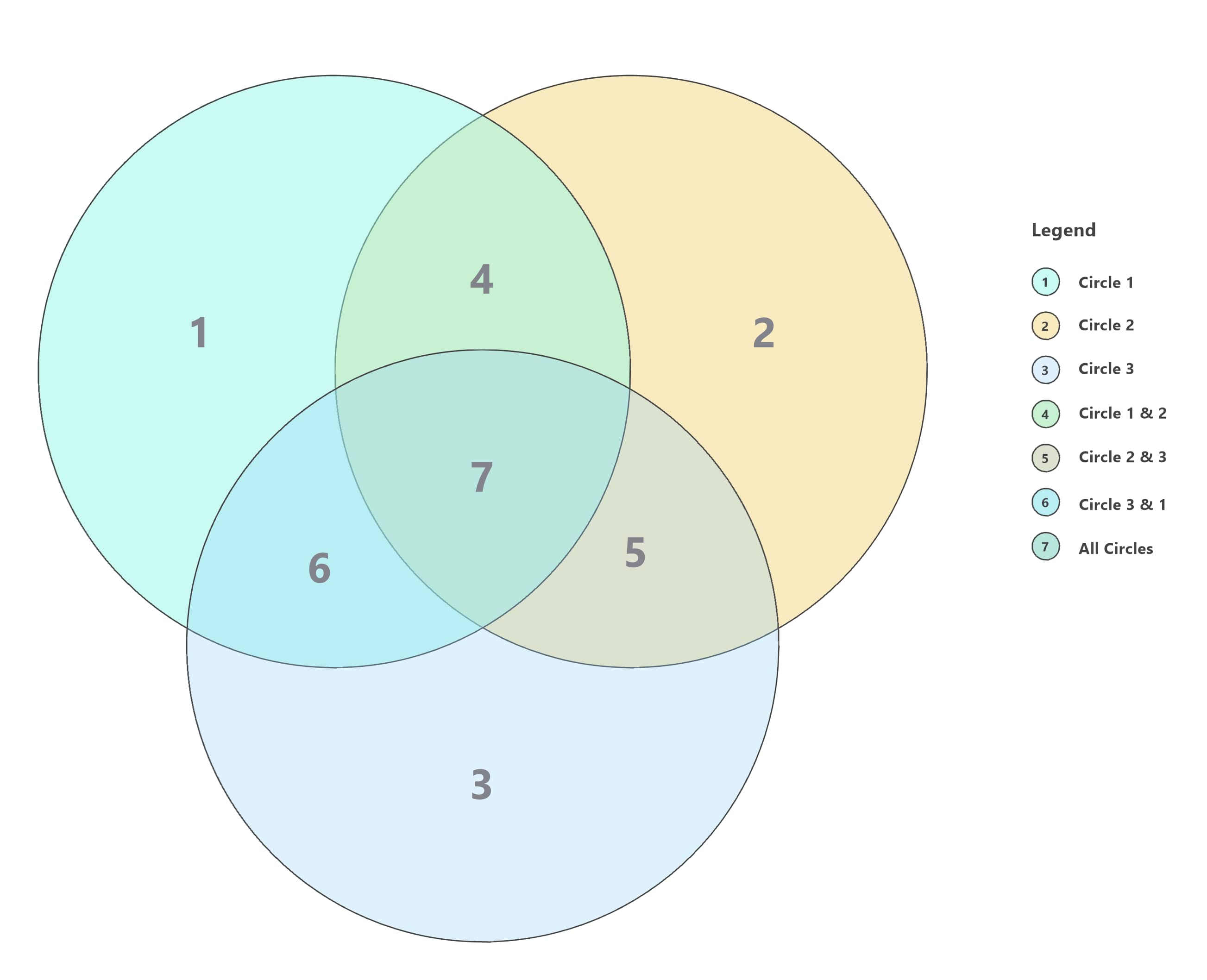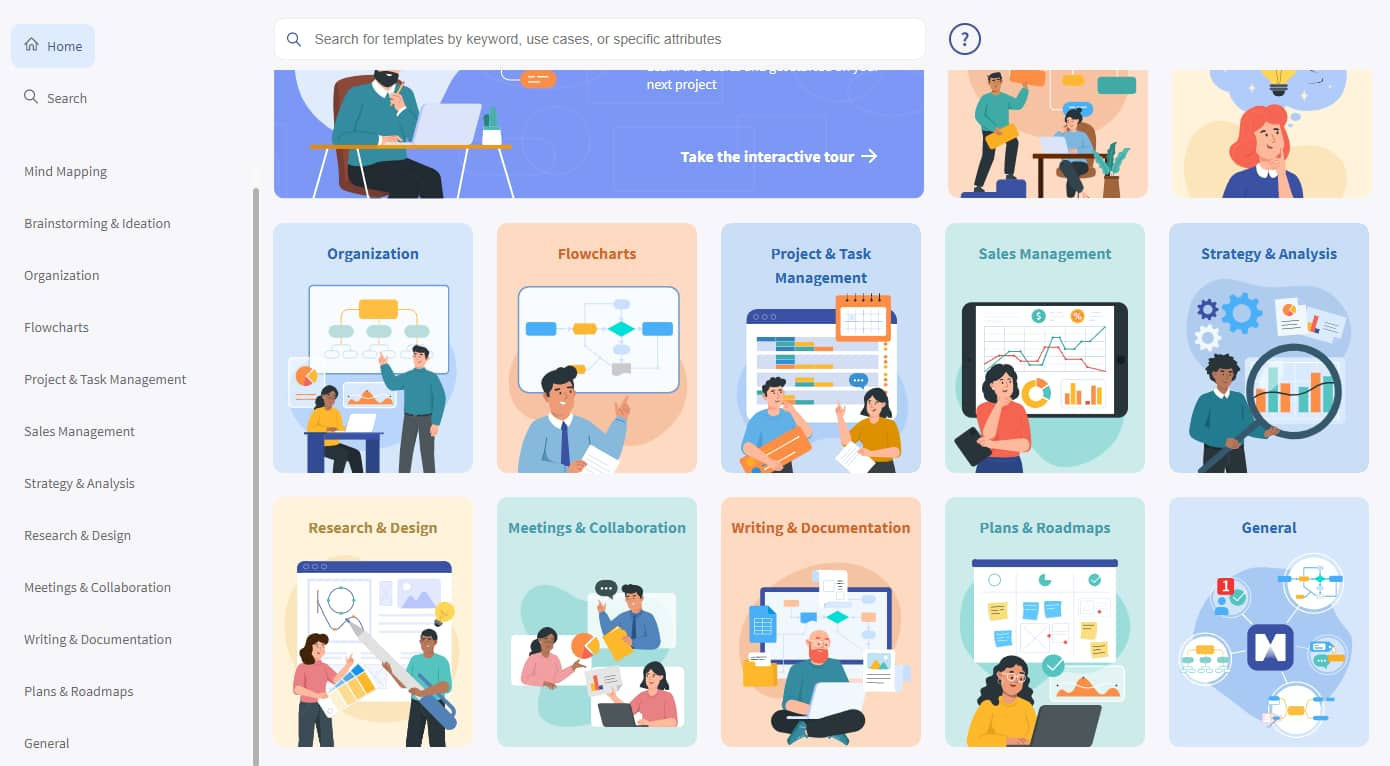
A Venn diagram illustrates the relationships between two or more data sets. Venn diagrams are especially useful for highlighting similarities and differences and are commonly used to compare and contrast the characteristics of different data sets.
In a Venn diagram, circles are used to represent each data set. Inside each circle is a list of characteristics that define that data. Characteristics shared between two or more data sets are listed in the area where the circles overlap. Simple Venn diagrams consist of two overlapping circles, but complex Venn diagrams may compare up to five or more data sets using up to five or more circles.
Venn diagrams are commonly used in business and education settings to visualize and explore how things relate. In a business context, Venn diagrams are commonly used in product development, marketing, management, and more.
You can choose the best format for your data sets with a few different Venn diagrams. Types of Venn diagrams include:
Two set diagrams are the most common—and most classic— type of Venn diagram. They are used to compare two sets of data, and they are formed from two overlapping circles. You could use a two set diagram to compare and contrast one of your products with a similar product from a competitor.
Three set diagrams are Venn diagrams with three overlapping circles. In a three set diagram, you compare each data set to each other, and you use the center section to write down similarities between all three data sets. An HR team could use a three set diagram to visualize the responsibilities of three different departments—and where responsibilities overlap—for example, marketing, sales, and operations teams.
Four set diagrams use four overlapping circles to compare four data sets. A marketing team might use a four set diagram to compare and contrast the functions and features of four different social media platforms—for example, Facebook, Twitter, Instagram, and LinkedIn.
Five set diagrams are more complex, with five overlapping circles arranged to compare and contrast five different data sets. While you could conceivably create a Venn diagram with more than five data sets, it can become difficult to read and interpret large diagrams. A sales team could use a five set diagram to compare and contrast different client prospecting channels. For example, referrals, networking events, cold calling, cold emailing, and social media.
Venn diagrams can compare and contrast an infinite number of different things. For more tips on when to use a Venn diagram in your daily work, check out these Venn diagram example use cases.
Venn diagrams help you visually categorize information, which is helpful when facing an important decision. Use a two set diagram to list similarities and differences between two options, or add circles if you choose between more than two potential outcomes. If you’re regularly partnering with outside vendors, onboarding software products, or making other important business decisions, Venn diagrams are a great tool for comparing features and options.
Marketers make Venn diagrams to explore the features and benefits of different marketing channels, social platforms, software options, and more. The visual format can provide a new perspective and valuable insights.
As mentioned in the three set diagram example above, Venn diagrams can help you understand job functions and responsibilities within a team or across an organization. If you need greater clarity and accountability within your team, make a Venn diagram to explore your team's various roles, tasks, and responsibilities.
When you have competitors providing similar products or services, Venn diagrams are helpful tools for competitive analysis. Use a Venn diagram to identify what sets you apart from your competition and explore ideas for gaining a competitive advantage in other areas.
Venn diagrams help you organize information and explore similarities and differences between different groups of ideas or objects. Key benefits of Venn diagrams include:
Venn diagrams provide a visual framework for note-taking and organizing information. The format enables comparing and contrasting to find similarities and differences between concepts and ideas, encouraging creative insights.
Venn diagrams help you closely examine the relationships between two or more things—ideas, concepts, objects, places, people, choices, and more. They are a powerful tool for comparison and can also help you find correlations and commonalities that weren't immediately apparent.
Using a Venn diagram to explore various choices can help inform your decision-making process and influence outcomes. By weighing options with a Venn diagram, you'll have a visual reference that could help make the right choice stand out.
Create a Venn diagram using this simple step by step process:
Venn diagrams help you organize notes, compare concepts, and make decisions. A Venn diagram software like MindManager makes creating a Venn diagram simple and seamless. MindManager's key features and benefits include:
Professionals across various industries and business functions use MindManager to gather, structure, analyze, and share information. With MindManager, you can clarify complex concepts and improve understanding within your team.
MindManager comes pre-installed with Venn diagram templates. To use these templates:

While a typical Venn diagram is made of two or three circles, there are other types of Venn diagrams made of four, five, or more. To avoid the confusion of too many overlapping circles, it's best to compare five for fewer data sets in one Venn diagram.
Most Venn diagrams do not require the use of special symbols, but some—especially in a mathematical context—use symbols as a system for notation. Common Venn diagram symbols include:
Use a Venn diagram to compare two or more sets of data. The steps for making and using a Venn diagram include choosing your data sets, drawing your circles, recording information, comparing characteristics and reviewing insights.
Venn diagrams provide a way to visualize the similarities and differences between two or more sets of data. They're simple to make and useful for decision making, marketing, understanding team roles and responsibilities, competitive analysis, and more.
With multiple types to choose from and many potential use cases, Venn diagrams are popular across various fields and functions.
Use a Venn diagram software like MindManager to start making dynamic visualizations. MindManager's premade templates, diagram-making tools, and user-friendly interface will help boost your productivity, streamline communication, and enrich workflows. Give MindManger a try today.